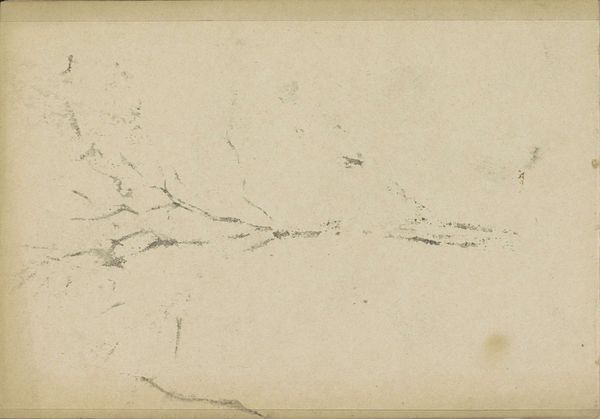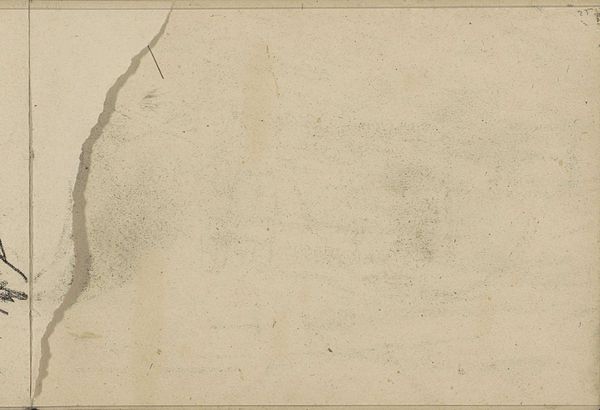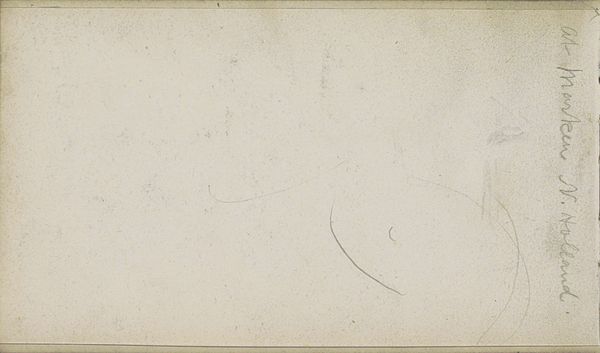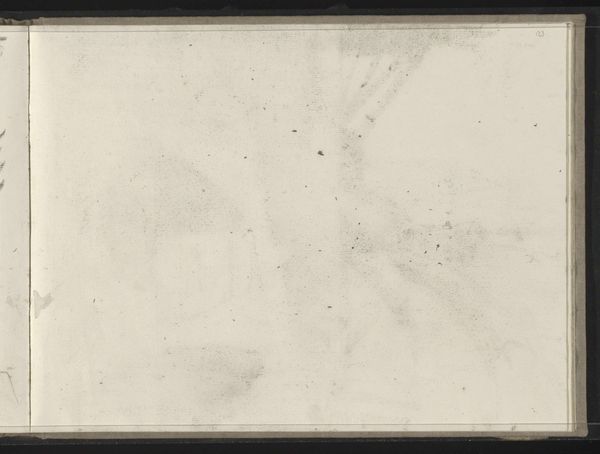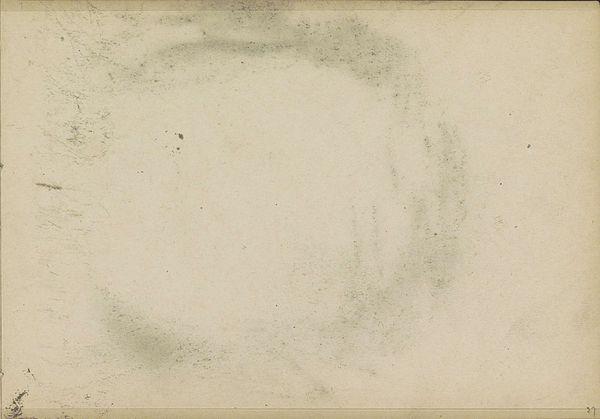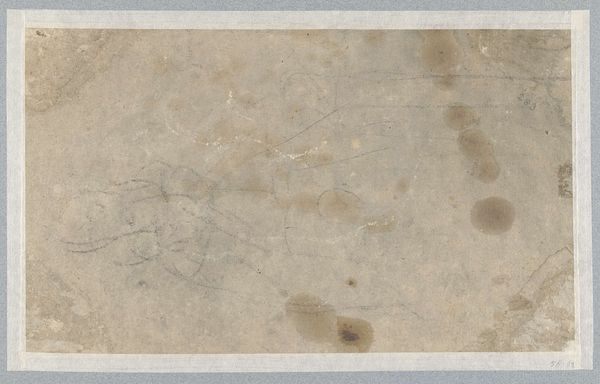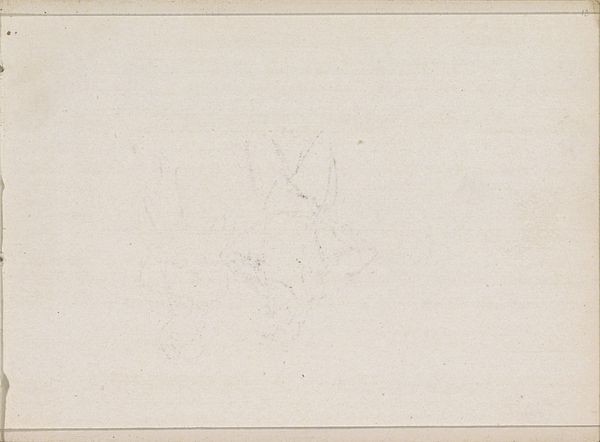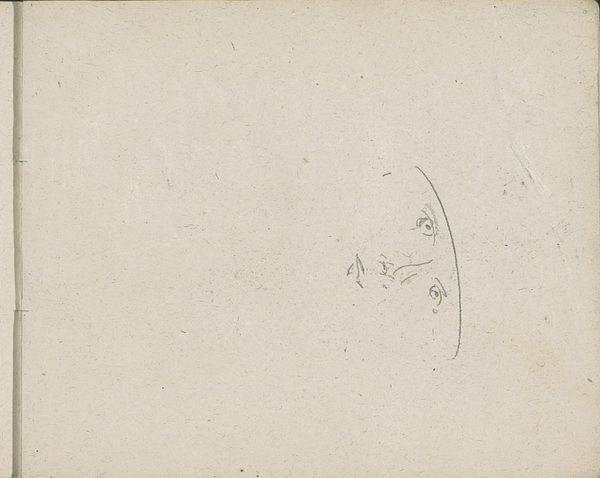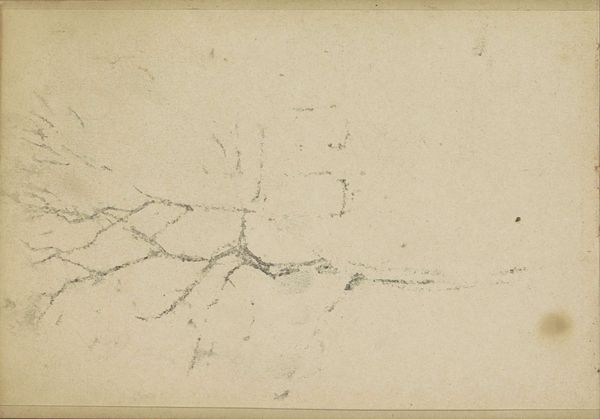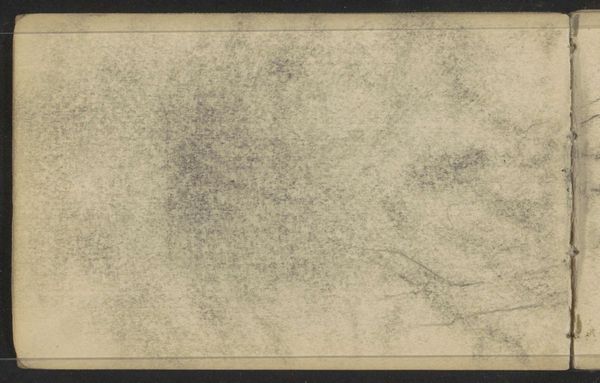
drawing, paper, pencil
#
drawing
#
impressionism
#
pencil sketch
#
landscape
#
paper
#
pencil
Copyright: Rijks Museum: Open Domain
Curator: Here we have "Studie," a landscape drawing by Willem Witsen, likely created between 1888 and 1891. It’s a pencil sketch on paper, a fleeting impression. What springs to mind for you? Editor: My first impression is…understated. Even melancholic, maybe. It feels like a whispered secret of a landscape, barely there on the paper. Are those raindrops, or just blemishes? Curator: Perhaps both! Witsen, an important figure of the Amsterdam Impressionism movement, was quite interested in capturing atmosphere. You have the pencil acting like a fleeting breath on the page itself. The apparent casualness, the “unfinished” quality…these were deliberate. What do you think the role of such pieces may have had during their time of production and for whom? Editor: Right, the casualness is crucial. It makes me think of how art supplies were changing then—pre-prepared canvases and paints, easels that made outdoor work easier. It's like this drawing is flexing against the trend towards slick, finished paintings. Curator: Absolutely. We're seeing the industrialisation of art itself being reflected here. The choice to use a simple pencil becomes almost radical, a deliberate step back to the basics. How interesting, for one simple image to capture that tension! The use of readily available paper suggests that there might have also been concerns of cost. Witsen may have intended this to be practiced outside prior to moving back to a canvas to work on with his prepared paints. Editor: And it's on view here in the Rijksmuseum now… a testament to the idea that what we might consider preliminary can actually hold significant artistic weight. All those marks, smears, and coffee rings become meaningful parts of the work. Curator: Precisely. It reveals how much we value the process, the hand of the artist at work, rather than just the polished final product. There is almost more appeal for it capturing more truth than those highly polished works in his catalogue. Editor: Thinking about materiality really shifts how you experience it. It makes me consider my own relationship with sketchbooks and pencils, the intimacy of working things out on paper. Curator: A beautiful way to put it! It shows us there’s value in every stage of creation. A simple act turned into an act that speaks of great historical relevance. Editor: Indeed. So much more than just a study, really. More of a window into a particular moment in artistic evolution.
Comments
No comments
Be the first to comment and join the conversation on the ultimate creative platform.
